Do you know How to care for orchids once you get them home? Many of us could use some pointers on these lovely exotic flowering plants.
Orchids can be difficult or easy to grow. The usual variety sold in stores is the phalaenopsis and that one is easy to grow. If you know what to do with it.
This guide is focused on phalaenopsis orchid care. There are well over 60 different varieties of this popular orchid. It is know as the moth orchid since its flowers grow shaped like a moth.
If you have a store bought orchid you probably brought home one of the 60 varieties of phalaenopsis. Moth orchids are easy to grow if you get one in good health to begin with.
Sourcing an orchid from the grocery store at a holiday is risky. Orchids are often grown as mass ‘throw away’ plants for cheap gifting with poor shipping conditions, cheap substrates and low quality plants.
However, moth orchids will often survive even these poor beginnings. With good care, they can sometimes give years of blooms.
Phalaenopsis orchids are available in many colors and patterns. They are extremely beautiful. They look more delicate than they actually are. With good basic care your orchid will live happily in your home for many years.

Moth Orchids are Great for Beginners:
This moth orchid is a hardy plant. Even the mass produced poorly handled holiday phalaenopsis orchids will often last years in the original pot.
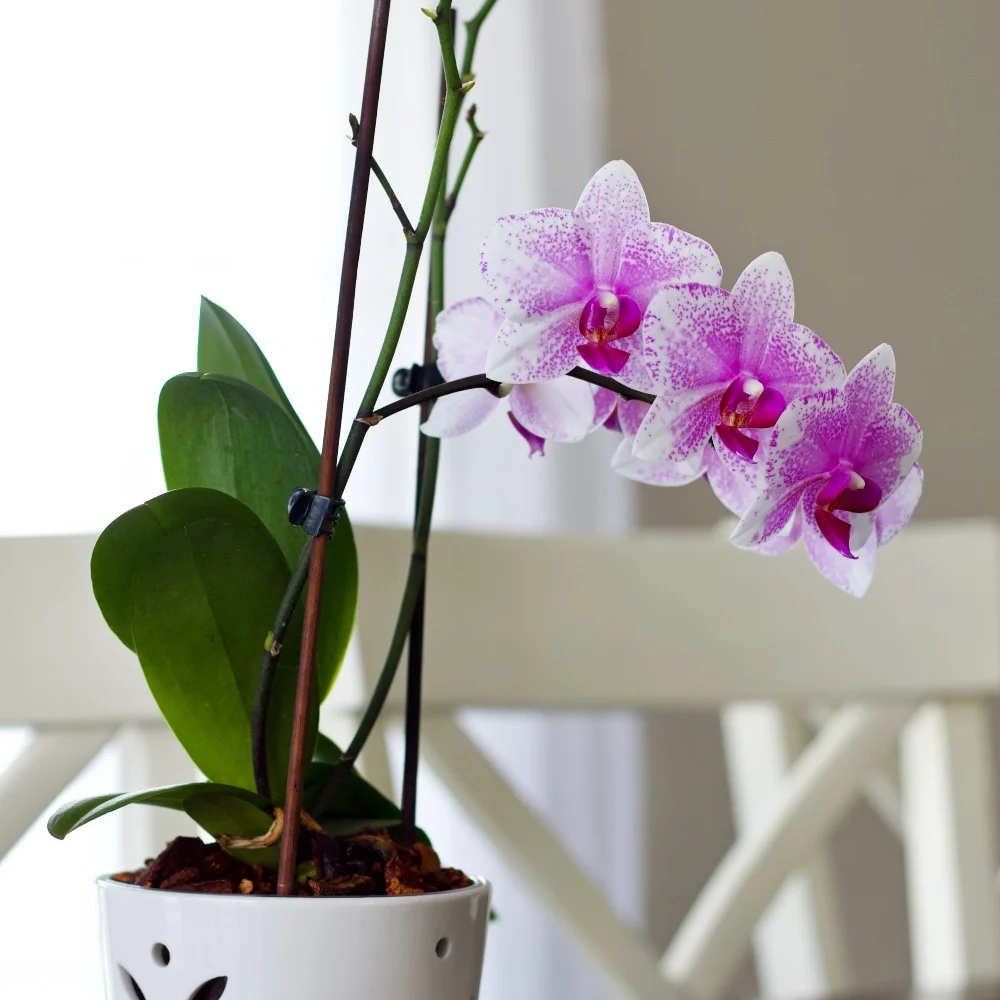
Moth orchids are often gifted to people that know nothing about them. These orchids often withstand irregular waterings, poor substrates and neglect and still bloom! And even rebloom.
Eventually though, even the toughest specimens need nurturing. Once the plant quits blooming they are often thrown out.
This care guide will help you grow your orchid and keep it happy for the long term. With care, it will rebloom annually for you.
There are some very interesting facts you should know about orchids. It will make the care guide below more sensible.
How Does An Orchid Grow?
Orchids are epiphytes. In nature, Orchids climb trees in hot humid tropical forests. Moth Orchids put out aroid roots that survive out of the soil. These arial roots anchor the orchid vines to trees. The roots sustain themselves as they climb by rooting themselves into the tree bark. Crevices in the bark collect food and moisture the orchid uses to sustain itself.
Moth Orchids can grow with very little actual soil. Orchid roots absorb their food and moisture from the humid air and very little else.
Questions Often Asked About Orchids:
If you are new to Orchids, these questions may be on your mind. Here are our answers.
How do you take care of an orchid for beginners?
Moth orchids are easy for beginners to care for. Moderate to bright light, good drainage in both soil and pot, and regular feeding will ensure a happy phalaenopsis.
These are tough and beautiful plants. Phalaenopsis orchids are a good orchid for beginners.
How Long Does An Orchid Last?
Orchids have been known to grow 100 years. They can reliably last decades if you learn how to take care of them correctly.
How do You Keep Orchids Blooming?
Orchids will bloom from 6 to 12 weeks, even longer, when they are happy. Then the blooms fall off and the plant goes dormant for a time. With exceptional care moth orchids can bloom twice a year.
What do You Do With an Orchid When The Blooms Fall Off?
Many people throw away orchids after they bloom. But wait! With proper care, Moth orchids will put up blooms annually. You can enjoy months of lovely blooms every growing season year after year.
Where Should You Put Your Orchid in Your House?
Place your orchid away from drafty entryways and windows with harsh hot sunlight pouring in. Moth orchids do best in places with moderate to bright indirect light for six hours a day. To encourage blooming set your orchid in a cooler (10 degree F. Drop) place at night to trigger blooming.
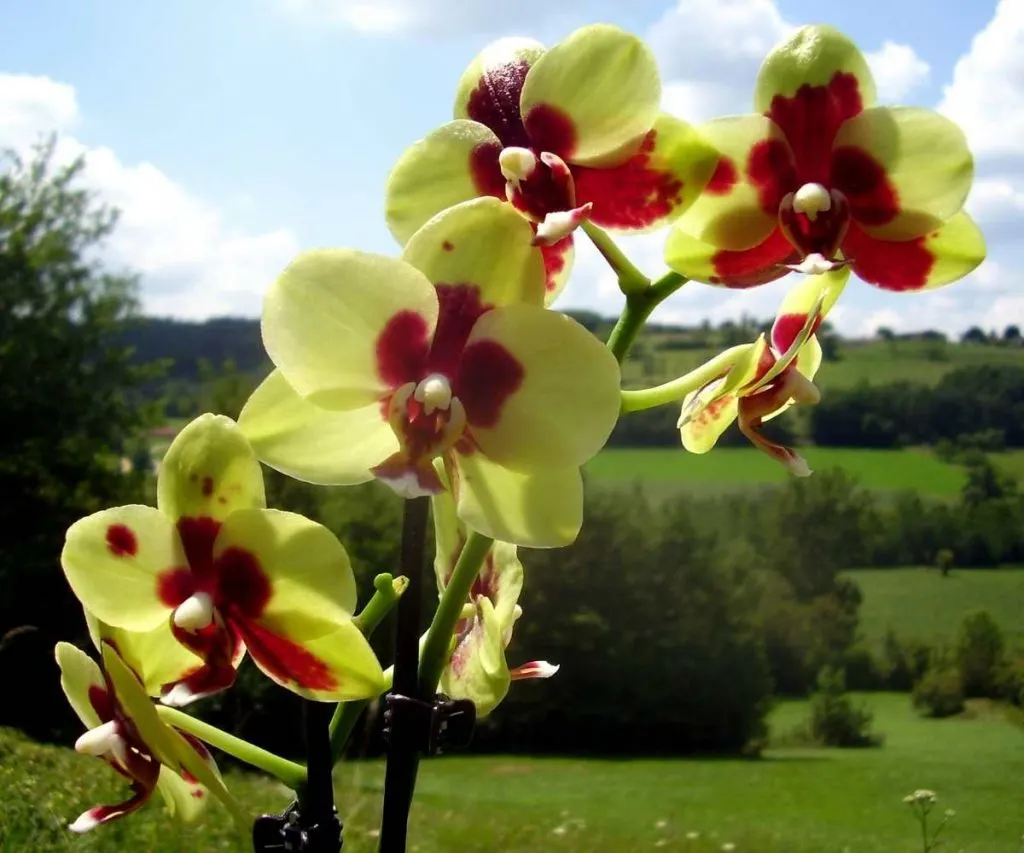
Basic Orchid Care:
You can find Orchids in almost any grocery or big box store with a plant shop. But some of them are not in great condition due to the mass marketing and ‘throw away plant’ reputation they have.
To seek out good quality orchids shop Etsy. Choose a well reviewed orchid shop. Talk to the shop owners and make sure you are getting exactly what you want.
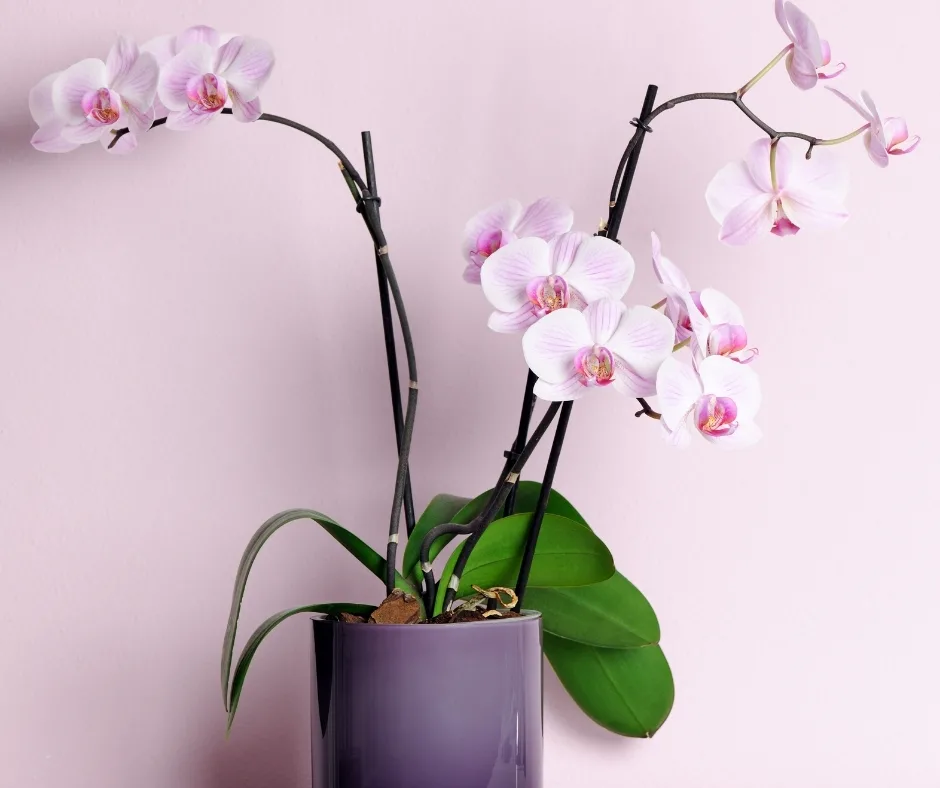
Orchid Care Quick Guide:
| Familiar Names: | Moth Orchid, |
| Scientific Name: | Phalaenopsis |
| Plant Family: | Orchidaceae |
| Care Difficulty: | easy |
| Temperature: | 65 to 85 degrees F. |
| Watering: | Water when the soil is dry. Soak the pot from the bottom and allow to drain. |
| Soil: | well draining or orchid potting soil or bark. |
| Fertilizing: | Orchids appreciate regular fertilizing every two to four weeks during the growing season with a 20-20-20- fertilizer or a half dose of a regular plant fertilizer. |
| Lighting: | Bright INDIRECT light 6 hours a day |
| Growth: | Moth orchids grow as small plants with long leathery leaves. This orchid flowers on tall spikes that erupt from the stem. |
| Flowering: | Phalaenopsis orchids bloom once or twice annually. Blooms normally last 6 to 12 weeks. |
Orchid Care Tips List:
- Orchids require a porous orchid potting mix of bark or a mix of bark and moss so the roots can breathe.
- Preferred orchid light levels are moderate to bright and indirect (1000 to 1500 for candles). Harsh, hot direct light will burn the leaves and shrivel the blooms.
- Moth Orchids bloom for months and months with proper care. Moth orchids will bloom again on old spikes.
- Ideal temperature needs for orchids change according to species. Nighttime Temperature ranges affect blooming. Orchids are triggered to bloom when the nightime temperatures drop about 10 degrees F. for about a month.
- Proper watering is essential. Moth orchids will get Orchid root rot if over watered. Water when the plant is dry. Soak it. Then drain the pot and allow to dry before watering.
- Use an orchid fertilizer that is balanced properly for these plants. Fertilize every 2 to 4 weeks during the growing season.
- Orchids prefer high humidity at 50% or higher. Add pebble trays or humidifiers to increase humidity.
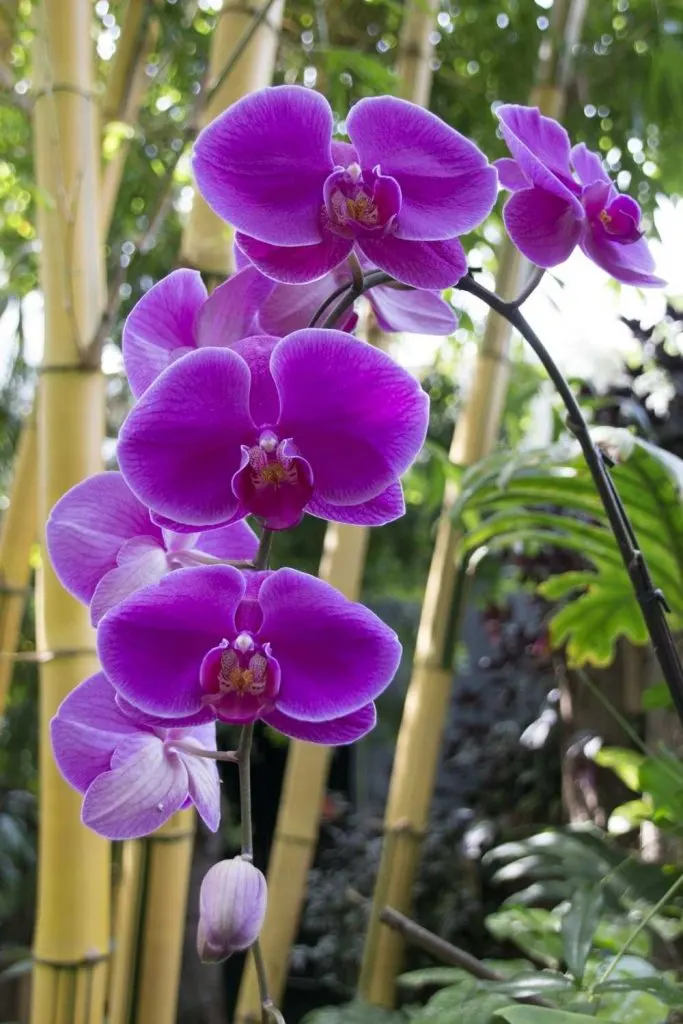
Printable Orchid Care guide:
This care guide is a list of important things you need to do to keep your orchid thriving. Moth Orchids can live many years with proper care.
Orchid Care Guide
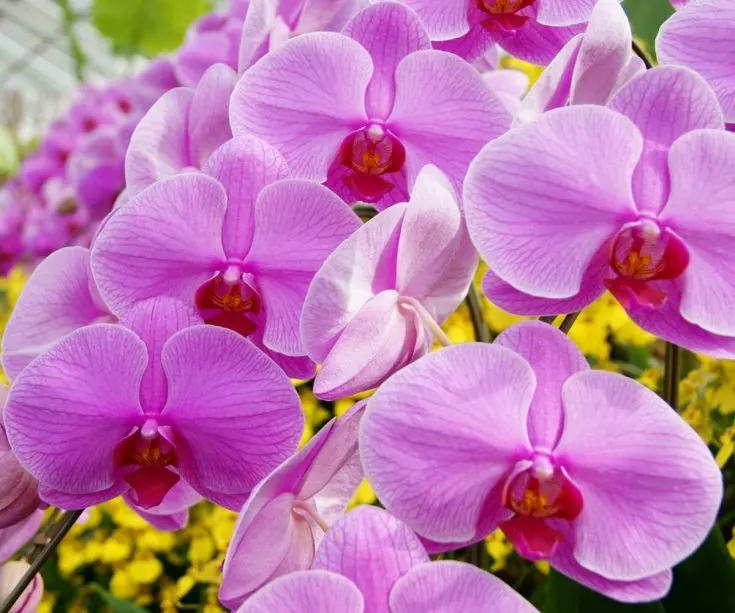
The world of Orchids is vast. This care guide will describe the best practices for basic care for most common orchids.
Materials
Tools
- Pot (ceramic, plastic, or terra cotta)
- pruners
- Rubbing Alcohol
Instructions
Soil Preference:
- Orchids prefer well draining Orchid potting mix. The roots will rot quickly if they sit in moist soil.
- Orchids need Orchid potting mix. linked in materials above.
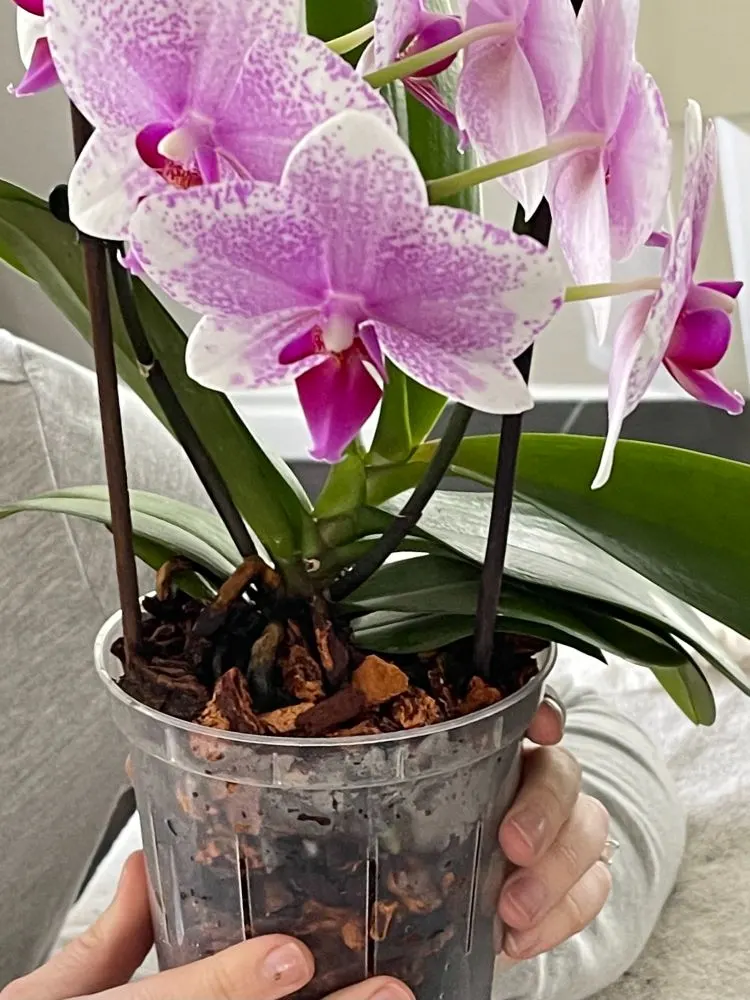
Pot Size and Type:
- Orchids do best in orchid pots. These are designed to allow the orchid roots to breathe.
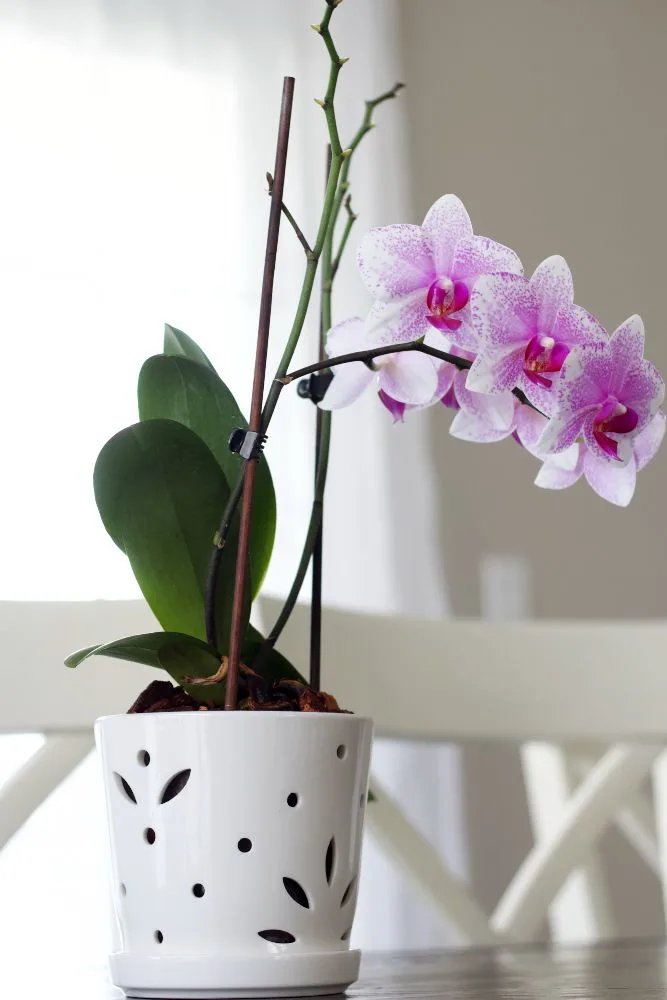
- This orchid is potted in a plastic orchid pot with slits in it. It sits in a pretty orchid cover pot with lots of good drainage.
- Repot every second year or when roots come out of the pot. Don't jump to a huge pot from a small one. Just go to the next size up pot.
Orchid light:
- Orchids need bright INDIRECT light at least 6 hours a day. Keep them out of strong direct hot light.
How to Water an Orchid:
- Orchids do NOT tolerate over watering. When properly potted in orchid bark mix they need weekly watering.
- Watering is best done by immersing the pot in room temperature water for 10 minutes or so until the bark absorbs the water. (Ice cubes are NOT recommended)
- AVOID immersing the stem and leaves of the orchid. When water collects in the attachment area between leaves and the stem it causes crown rot.
- Then drain the pot another 10 minutes or so before putting it back in it's preferred area.
- In growing season and brighter light you may need to water more than once a week but don't over do it.
- In dormant winter months reduce watering to when the bark is completely dry.
- Never let this plant get wet feet. Orchids in heavy wet soils get Orchid root rot and fungus gnats.
Fertilizing Orchids:
- Apply a good quality Orchid fertilizer (linked in materials) monthly through Spring and summer.
- Alternately, you can fertilize weekly if you use quarter strength orchid fertilizer. This gives the plant more consistent feeding over a month. Once a month let the plant rest with a plain watering to flush out excess salts.
- Decrease feedings by late Fall and allow your orchid to rest through the winter months.
Orchid Temperature:
- Orchid plants vary in their temperature preferences.
- The moth orchid will do best in temperatures between 65-85 degrees F.
- TIP: when trying to get an orchid to bloom give it a temperature drop of 10 degrees F at night for about a month.
Pests:
- Unfortunately, orchids are susceptible to a number of insect and mite pests, including aphids, mealybugs, scales, spider mites, and thrips.
- Stress by longterm overwatering, poor light, extreme temperatures and soil conditions are contributors to pest infestations..
- Read our post on How to get rid of aphids and other pests with our homemade pesticide soap recipe or neems oil.
- To minimize the possibility of pests be sure to check all nursery plants before bringing them home.
- Quarantine all new plants until you are sure no pests live in them.
Notes
Our video below shows Kayti repot an orchid
More Informative articles on Orchids:
Orchids are different than other houseplants. These articles will help you learn the unique properties of orchids and how to repot, which pots to use for them and how to fix root rot in orchids.
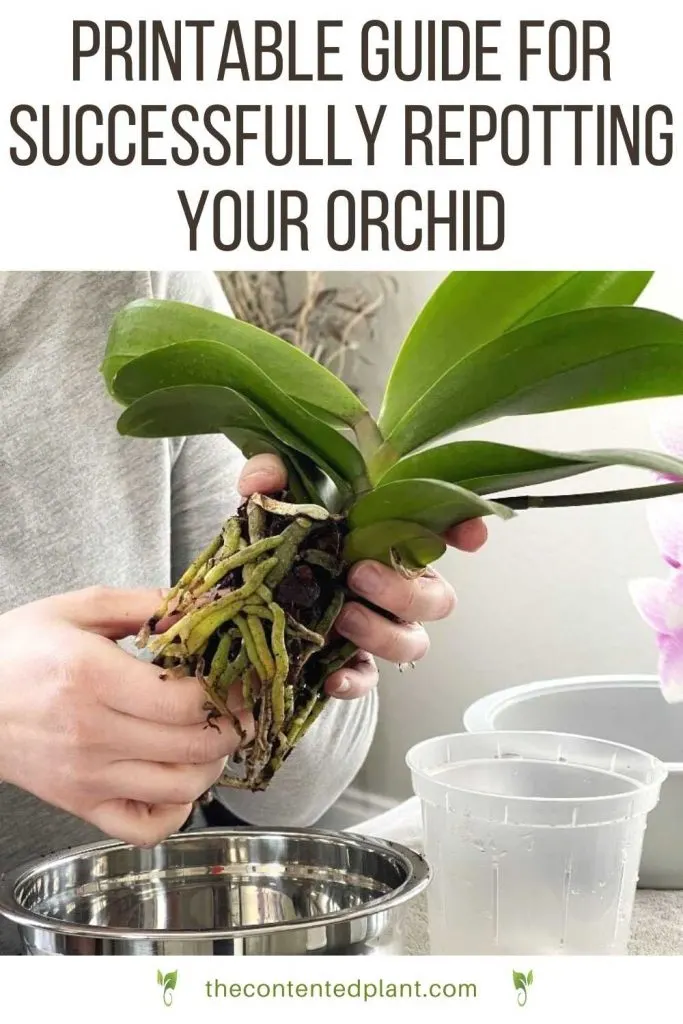
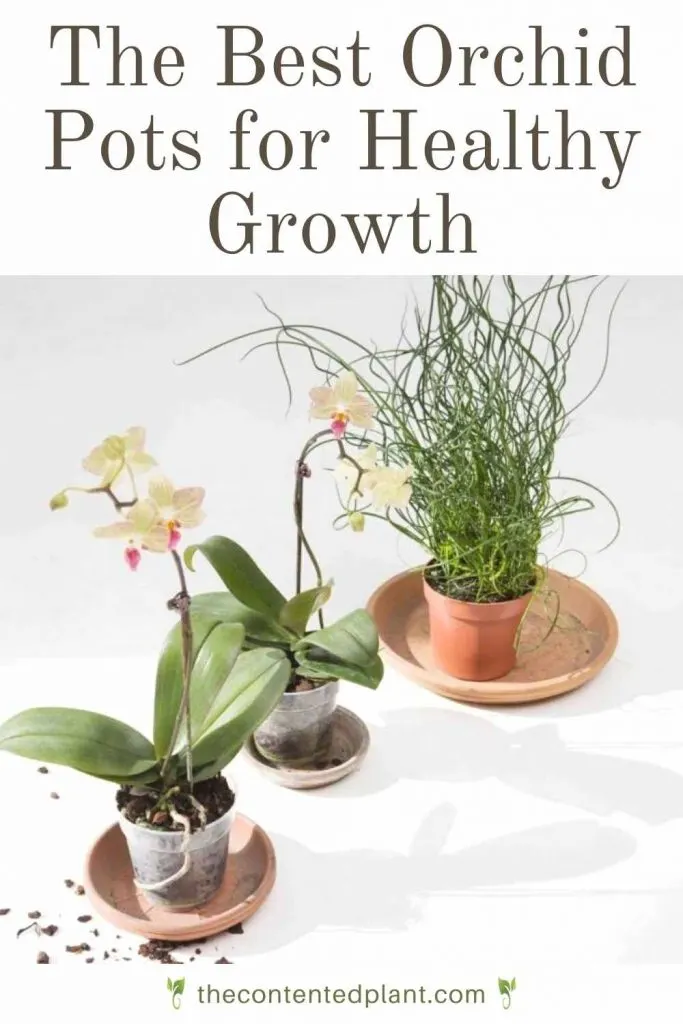
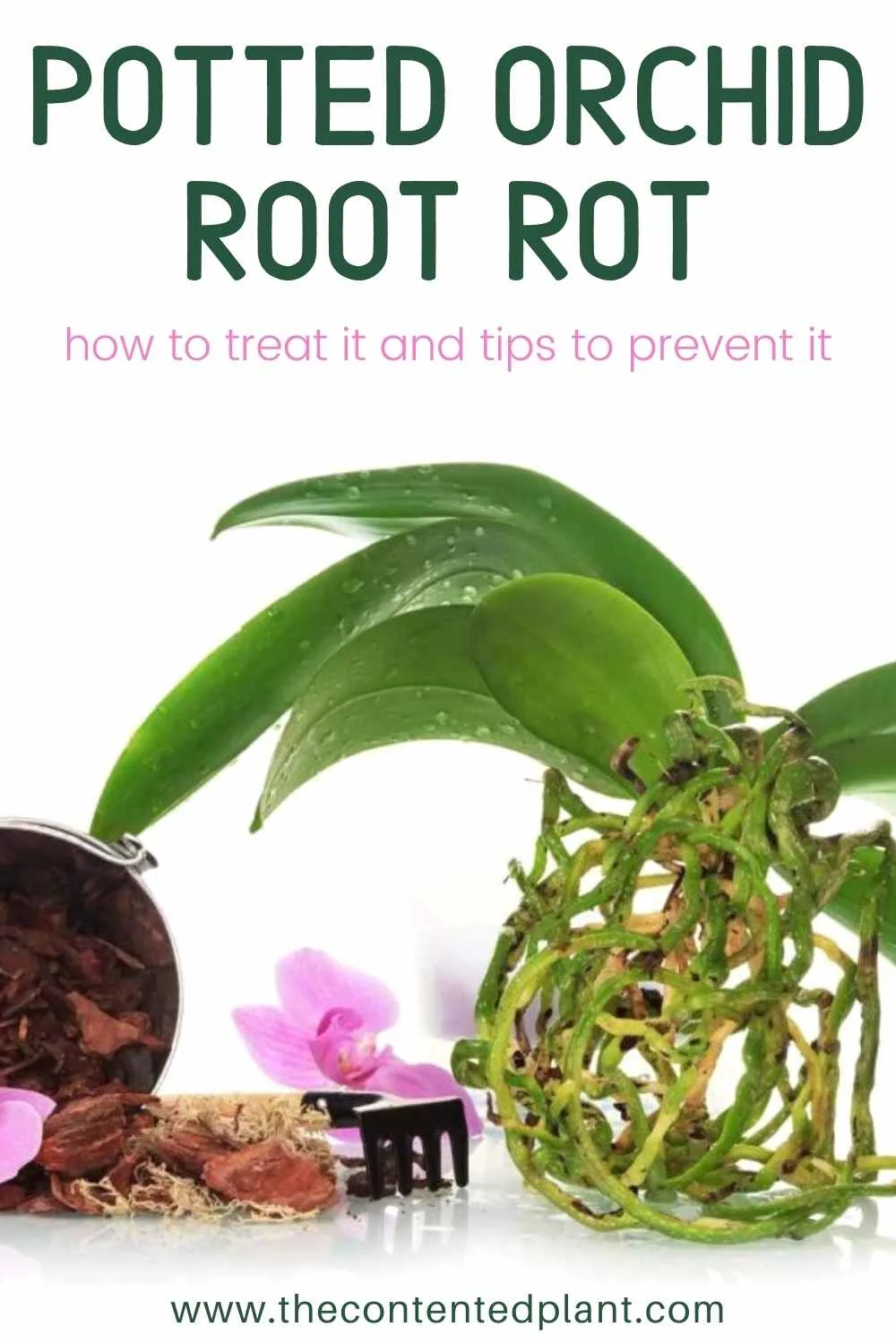
Follow Us:
Find us on YouTube, Instagram , Pinterest and TikTok! We love to Plant chat. We also comment, like and occasionally share your content to our daily stories. We’d love to see your plants. Share your joy in your houseplants. Happy Planting!
Related Content:
Latest Posts:
- 5 Fantastic Cactus Species for Your Home
- Pygmy Date Palm Trees
- Bromeliad Care Guide and Profile
- Growing Gloxinia Plants in Your Home
- Staghorn Ferns Care and Maintenance
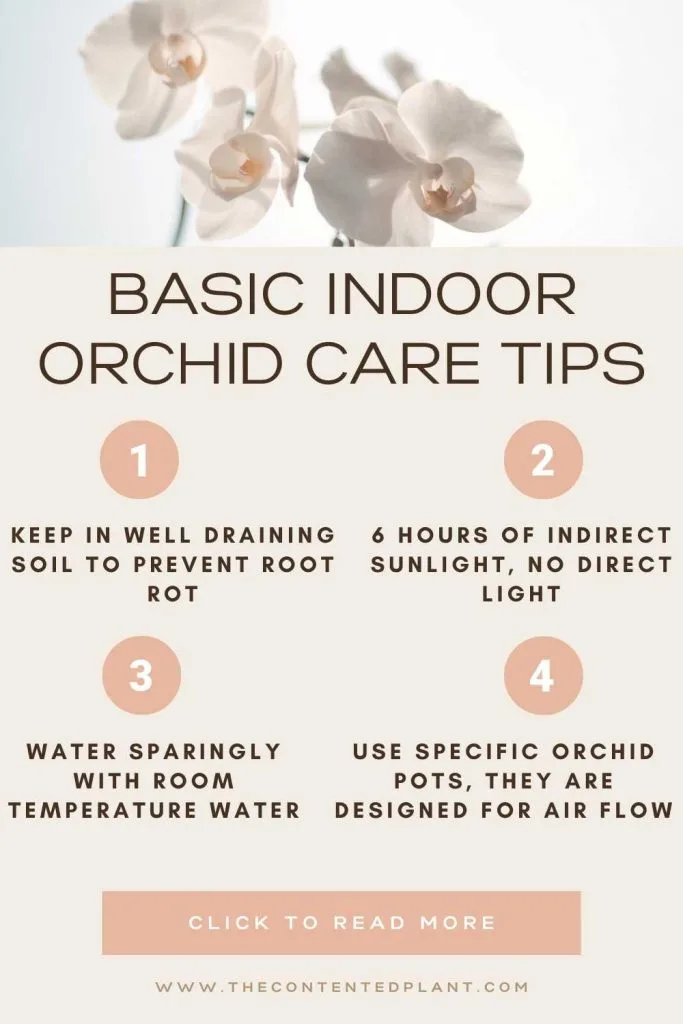
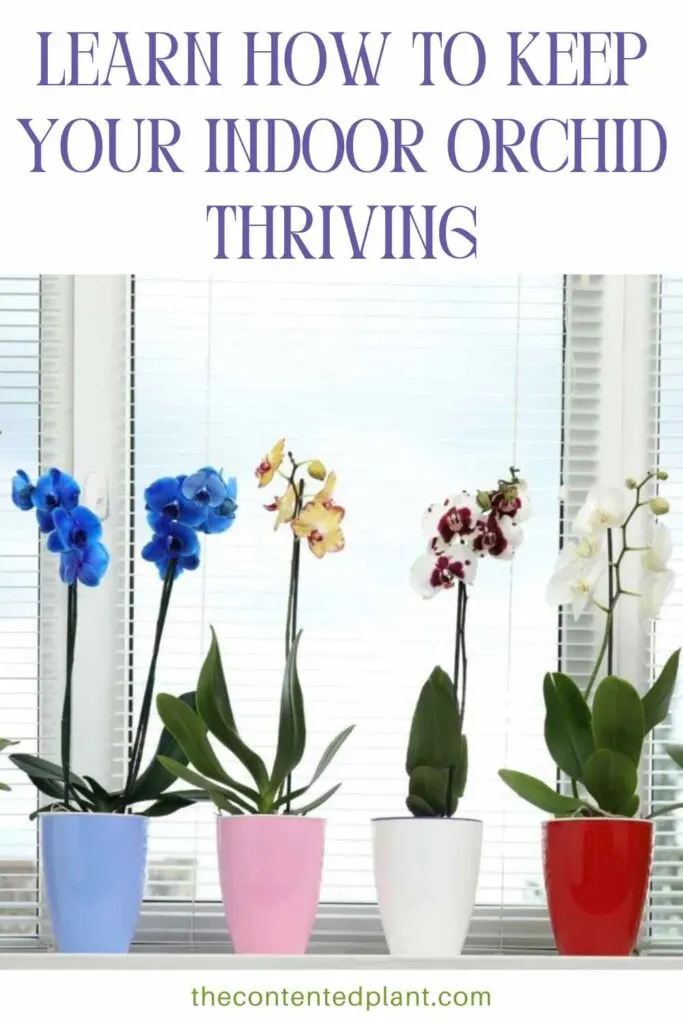
Orchid care Resources:

How to Repot An Orchid Successfully - The Contented Plant
Wednesday 7th of December 2022
[…] our printable Orchid Care Guide to keep your orchids well maintained, happy and blooming after […]
Leca For Plants- Which Plants Thrive in LECA? - The Contented Plant
Saturday 10th of September 2022
[…] gaps in the plant pot that allow roots to breathe. This is especially beneficial to epiphytes like orchids or Hemi epiphytic like Monsteras. Their roots MUST have a lot of […]
Coleus Varieties for Sun or Shade - The Contented Plant
Thursday 25th of August 2022
[…] Indoor Orchid Care for Beginners […]
Best Orchid Pots for Healthy Growth - The Contented Plant
Friday 6th of May 2022
[…] Read our Complete Orchid Care Guide to find everything you’ll need to keep your beautiful orchid healthy for years to come. […]
Best plants for beginner plant parents - The Contented Plant
Tuesday 26th of April 2022
[…] it may be tempting to grab one of the many beautiful Calatheas, the gorgeous Orchids, or a Fiddle Leaf Fig from the plant shop…Experienced plant people will readily warn you away […]